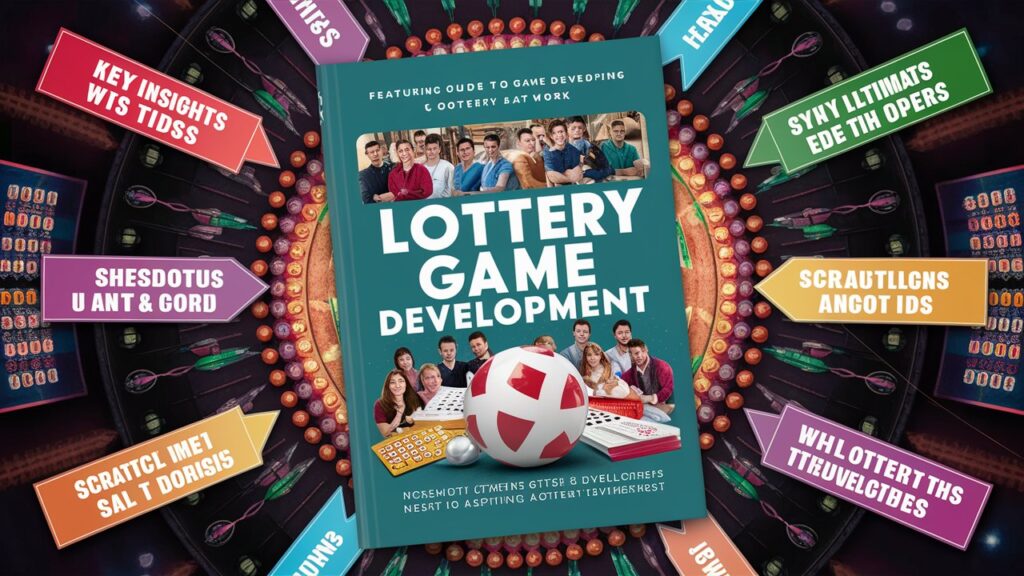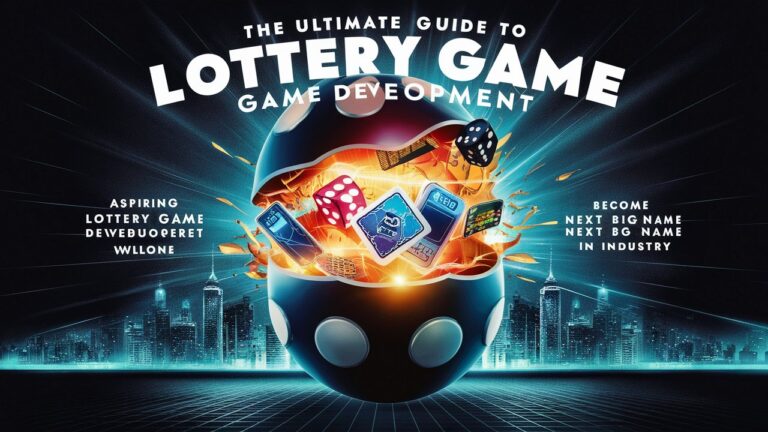Introduction
The lottery industry has evolved dramatically with the rise of digital platforms, creating immense opportunities for lottery game developers to innovate and captivate audiences. Whether you’re a seasoned developer or a newcomer, understanding the intricacies of lottery game development is essential to creating engaging, secure, and profitable games. This article explores the core components of designing and launching successful lottery games, from conceptualization to compliance. We’ll delve into the technologies, strategies, and best practices that define this niche, along with answering frequently asked questions to help you navigate this competitive landscape.
1. Understanding the Role of Lottery Game Developers
Lottery game developers are the architects behind the games that millions of players interact with daily. Their role extends beyond coding—they must balance creativity, mathematics, and regulatory compliance. Developers design algorithms for random number generation (RNG), integrate secure payment gateways, and ensure games adhere to jurisdictional laws. A deep understanding of player psychology is also critical, as games must be visually appealing, easy to use, and rewarding to keep users engaged.
The process often involves collaboration with graphic designers, compliance experts, and data analysts to create a seamless experience. For instance, developers must optimize games for mobile platforms, as over 60% of lottery players now use smartphones. This demands expertise in cross-platform development tools like Unity or HTML5, ensuring games run smoothly across devices.
2. Key Stages in Lottery Game Development
The lifecycle of lottery game development can be divided into six stages:
a. Concept and Market Research
Before writing a single line of code, developers must identify their target audience and analyze competitors. Market research helps determine popular game mechanics, such as scratch cards, daily draws, or progressive jackpots. For example, younger audiences may prefer instant-win games with vibrant animations, while traditional players might favor classic number-draw formats.
b. Game Design and Prototyping
This phase involves creating wireframes, storyboards, and prototypes. Developers focus on user interface (UI) design, ensuring intuitive navigation, and user experience (UX) to maximize retention. A/B testing early prototypes can reveal flaws in mechanics or design, allowing for refinements before full-scale development.
c. Development and Integration
Here, developers build the core game engine, integrate RNG systems, and connect backend systems for ticket purchases and prize distribution. Security is paramount—encryption protocols like SSL/TLS and blockchain-based solutions are often used to protect user data and transactions.

d. Testing and Quality Assurance
Rigorous testing ensures the game is bug-free, fair, and compliant. QA teams simulate high traffic, test edge cases (e.g., simultaneous ticket purchases), and verify RNG fairness through third-party audits like eCOGRA or iTech Labs.
e. Regulatory Compliance and Licensing
Lottery games are heavily regulated. Developers must obtain licenses from authorities like the Malta Gaming Authority or UK Gambling Commission and ensure games meet regional laws, such as age restrictions and responsible gaming features.
f. Launch and Post-Launch Support
After launch, developers monitor performance metrics like player retention and revenue. Regular updates, seasonal themes, and bonus features keep the game fresh. Customer support tools, such as chatbots, help resolve player issues promptly.
3. Technologies Powering Modern Lottery Games
Lottery game development relies on cutting-edge technologies to deliver immersive experiences:
- Random Number Generators (RNGs): Certified RNGs ensure fair outcomes, often using cryptographic algorithms to prevent manipulation.
- Blockchain: Decentralized ledgers enhance transparency, allowing players to verify draw results independently.
- Artificial Intelligence (AI): AI analyzes player behavior to personalize promotions or detect fraudulent activity.
- Mobile-First Platforms: Frameworks like React Native enable developers to build responsive, cross-platform games efficiently.
- Cloud Computing: Scalable cloud infrastructure handles peak traffic during high-stakes draws.
4. Compliance and Regulatory Considerations
Navigating regulations is a cornerstone of lottery game development. Developers must:
- Adhere to anti-money laundering (AML) laws.
- Implement geolocation tools to restrict access in prohibited regions.
- Include self-exclusion options and spending limits for responsible gaming.
Failure to comply can result in hefty fines or revoked licenses, making legal consultation indispensable.
5. Monetization Strategies for Lottery Game Developers
Monetization models vary:
- Ticket Sales: The primary revenue stream, often split between prizes, operators, and developers.
- In-App Purchases: Sell virtual items or bonus tickets.
- Advertisements: Partner with brands for in-game ads or sponsored draws.
- Subscription Models: Offer premium memberships for exclusive games or higher odds.
Conclusion
Lottery game development is a dynamic field blending creativity, technology, and regulation. By prioritizing player engagement, security, and compliance, lottery game developers can craft games that resonate with global audiences. As the industry embraces innovations like blockchain and AI, staying ahead requires continuous learning and adaptation. Whether you’re developing a simple scratch card or a multi-jurisdictional jackpot game, the key lies in balancing innovation with responsibility.
Frequently Asked Questions (FAQs)
Q1: How do I start a career in lottery game development?
Begin by learning programming languages like C# or JavaScript, and study gaming frameworks like Unity. Familiarize yourself with gambling regulations and RNG certification processes.
Q2: What technologies are essential for lottery games?
RNG systems, payment gateways, geolocation APIs, and compliance tools are critical. Cloud infrastructure and analytics platforms are also vital for scalability.
Q3: How long does it take to develop a lottery game?
A basic game can take 3–6 months, while complex projects with multi-regional compliance may require 12+ months.
Q4: How do I ensure my game is fair?
Use certified RNGs and undergo third-party audits. Publish audit reports to build player trust.
Q5: What are common monetization pitfalls?
Overloading games with ads or pay-to-win mechanics can alienate players. Balance revenue goals with user experience.
By addressing these elements, developers can create lottery games that thrive in today’s competitive market.
